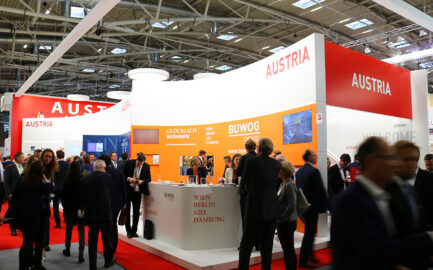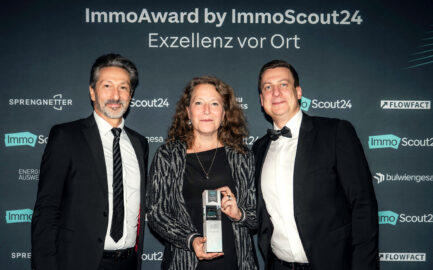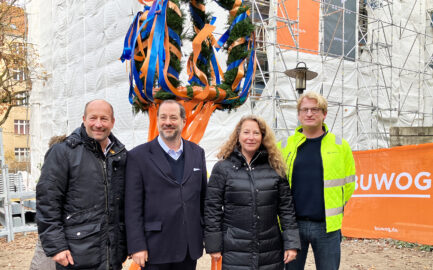2021 is a very special year for us: We are celebrating 70 years of BUWOG and with it 70 years of “happy living”. And we want to use this anniversary as an opportunity to portray BUWOG in all its diversity as part of a blog series. Over the coming weeks, we will be posting a series of articles focusing on some of the company’s key business areas and strategic principles. We will begin with a look back at our history, a quick run-through from the company’s beginnings in 1951 to the most recent developments.
Beginning of a success story
The Third Man was still prowling the tunnels of Vienna’s sewer network, the river Enns served as the inner-Austrian border between the American and Soviet zones and the legendary “Four in the Jeep” were a common sight on the streets of the Austrian capital. And there was a housing shortage on a scale that is hard to imagine today when, 70 years ago, the decision was made to establish a company owned by the Republic that would serve the noble goal of providing cheap housing for civil servants and other public employees. This business establishment marked the birth of BUWOG, which was entered in the commercial register in 1951.
There were enormous expectations of the “Wohnungsgesellschaft für Bundesbedienstete” (“housing company for federal employees”). After all, there was a shortage at the time of around 60,000 flats in Vienna alone, as contemporary sources attest. That makes the 210 units built by BUWOG in its founding year seem quite modest in comparison, but it was the beginning of a decades-long success story that made BUWOG a cornerstone of the residential market for civil servants. It’s no coincidence that writer Wolf Haas had his fictitious Detective Brenner live in a BUWOG apartment.
This first phase of our history lasted about half a century. But even if the company’s mission did not change fundamentally during this time, it was also a period marked by profound change. The original objective of creating as many flats as possible as quickly as possible increasingly gave way to the aim of offering the best possible quality of living and housing at affordable costs. More and more often, BUWOG also realised architecturally pioneering projects, such as Reinhard Gieselmann’s development in Peter-Jordan-Straße in Döbling (1969-1973), Roland Rainer’s development in Währing, completed in 1976, or the large An der Ach housing estate in Bregenz, built from 1971 to 1982, with its more than 800 flats.
Transition to the most active private housing developer
But despite these continuous and quite far-reaching changes, the general development of the Austrian real estate market – in particular the considerably broader range of privately financed and subsidised housing – meant that BUWOG, as a state-owned housing company, increasingly seemed somewhat out of date. So it only made sense that, at the beginning of this century some 50 years after its foundation, BUWOG was sold as part of a large-scale privatisation of federally owned housing companies. The fact that the circumstances of this sale remain the subject of judicial investigations to this day is undoubtedly one of the less pleasant aspects of BUWOG’s history.
Nevertheless, the privatisation marked the beginning of the next chapter in our 70-year success story. As part of the IMMOFINANZ Group, BUWOG, which absorbed its sister company ESG (today BUWOG Süd), made the transition from housing provider to one of the most active and most successful private housing developers in Austria. At the same time, the housing portfolio was restructured and a large portion of the flats in western Austria were sold. The result was a sustainable portfolio clearly focused on the greater Vienna area and the states of Carinthia and Styria.
Innovation and internationality
2010 saw the beginning, almost unnoticed, of the next and for the time being last major chapter in the BUWOG success story. The company acquired some 2,000 flats from the Immofinanz portfolio in Berlin. No more than an internal restructuring within the corporate group, so the leap into the international real estate business was actually more of a small hop. But the foundation had been laid. Further portfolios were acquired in Germany in quick succession and, following the acquisition of a development company in 2012, BUWOG began developing the first residential complexes of its own, especially in the capital city of Berlin.
This strategic expansion was an important reason why BUWOG shares were highly sought after by international investors at the time of its IPO in 2014. The capital market opened up new growth opportunities, which were actively exploited with an extensive expansion of development activities that, in turn, made BUWOG even more attractive to investors. So attractive, in fact, that the DAX-listed Vonovia Group launched a takeover bid in 2018, making BUWOG part of one of Europe’s leading housing companies.
But BUWOG was not simply merged into Vonovia and disappeared. On the contrary, not only was BUWOG retained as a company and a strong brand, it was also elevated to centre of excellence for the development business of the corporate group as a whole. With a portfolio in Austria that is again on the rise and a steadily increasing number of development projects as part of a fast-growing European group, the conditions are perfect for adding even more capital to a 70-year success story.
These articles might also be of interest to you:
Housing Guide: Mould – What to Do?
Housing Guide: Heating the Right Way
Art auction in Hanau: BUWOG supports benefit exhibition
⯈ Nothing to miss? Follow BUWOG on Twitter









